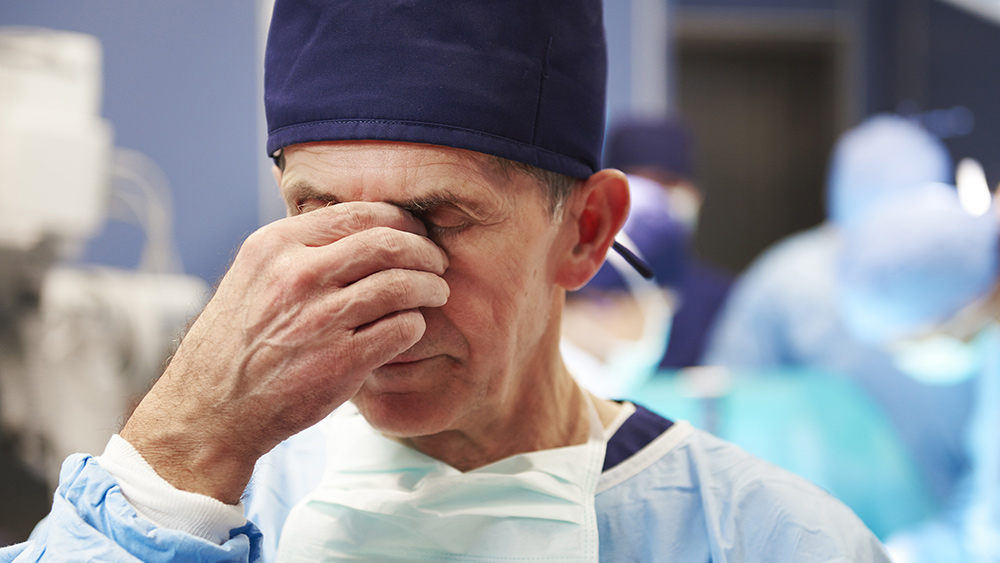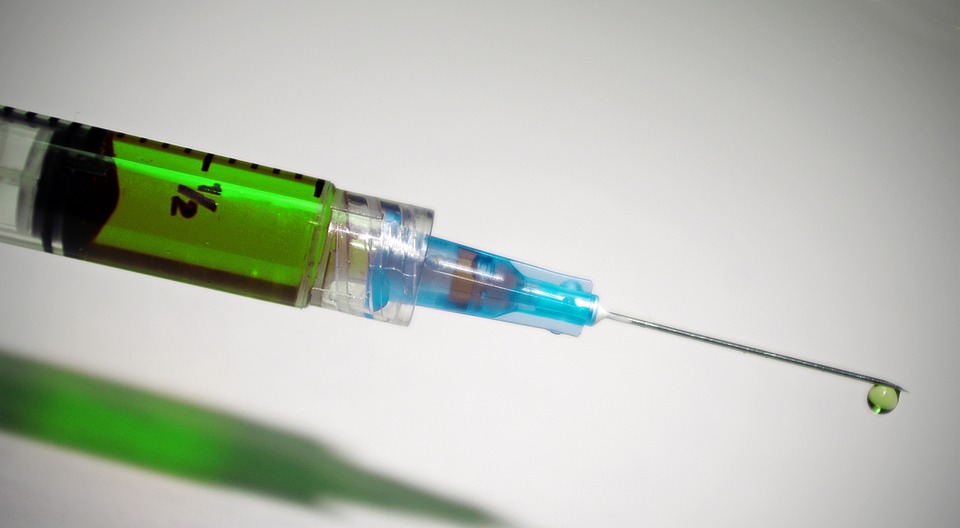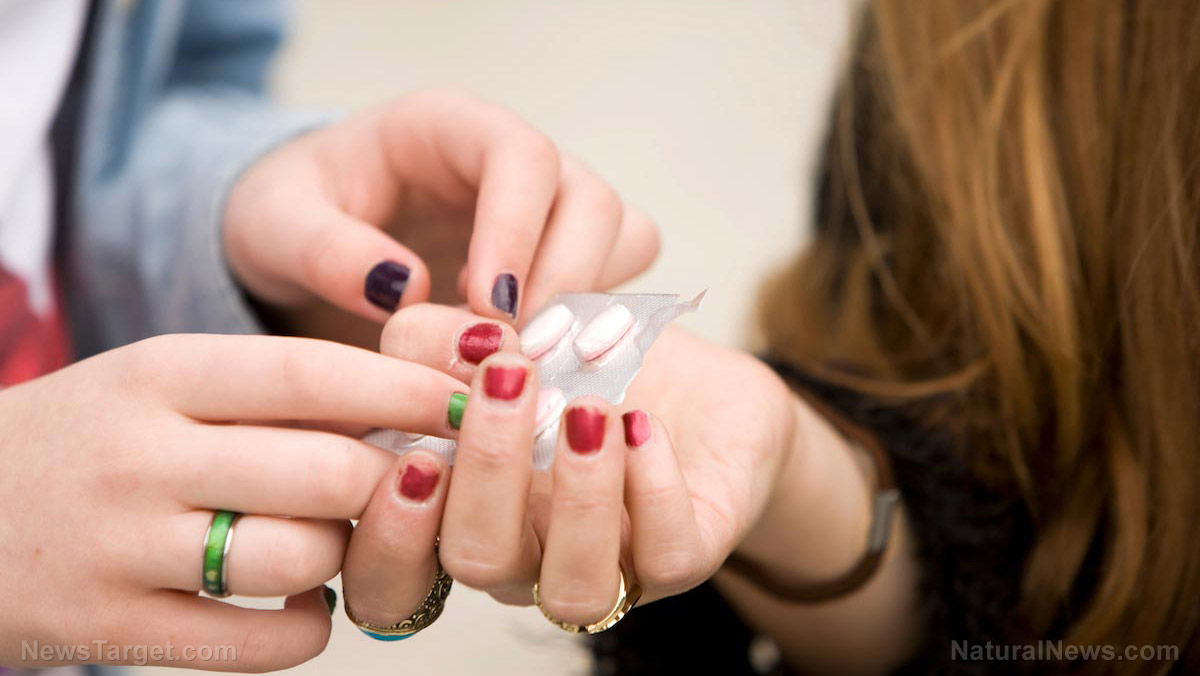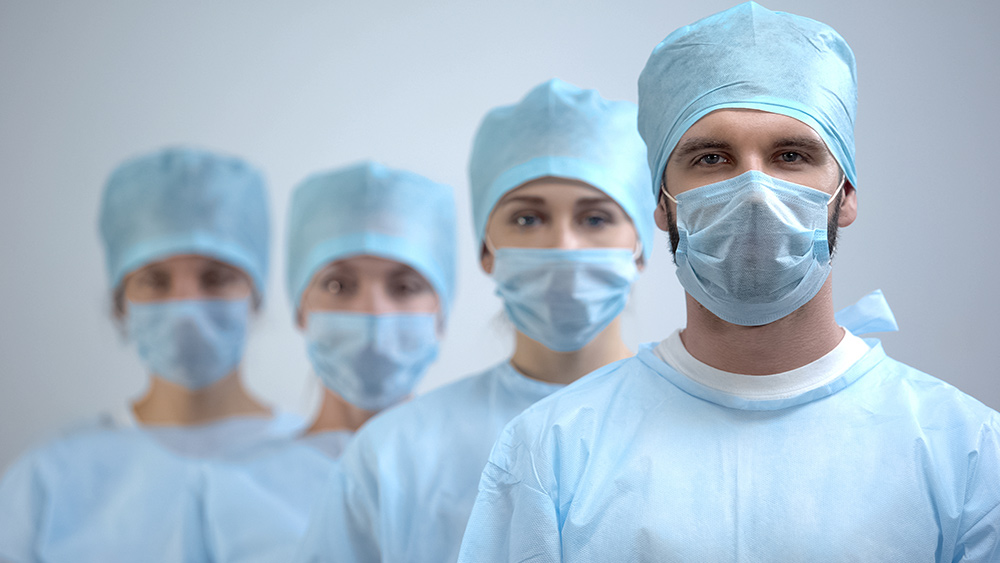Oral Medicine – Dental Toxicology: An Introduction to Biological Dentistry
10/03/2016 / By holisticdentistry

Oral medicine can be conceived in several ways. One way would be dentistry for people with medical illnesses, such as palliative treatment for mucositis in people undergoing cancer chemotherapy, or preoperative screening for heart surgery or joint replacement, to rule out infections that could threaten the outcome of the procedures. Another way to conceive of oral medicine would be to concentrate on the connection between oral conditions and the health of the rest of the body. The effects of periodontal infections on markers of systemic inflammation and cardiovascular health are the best known examples.
Article by IAOMT.org
A third way to conceive of oral medicine is to consider the effects of dental materials and dental procedures themselves on the overall health of the body. For those of us who perform our healing functions by implanting foreign or synthetic materials in people’s bodies, the constant challenge is to understand the toxicology, the immunology, the microbiology of our work, and to minimize its impact on the biological terrain of our patients.
“Do no harm,” goes the injunction. But how can we ever be certain that a negative biological response to our work, something unforeseen, will not occur, whether in the whole population or in a single individual patient? We can only be vigilant for new information we can use to refine our techniques, and sensitive to new discoveries that call into question previously accepted views. Until we can replace body parts, like teeth, with all “self” materials, the concept of biocompatibility will always represent an approximation, and a work in progress.

We are the 4%
In a 2001 readers’ survey, the Clinical Research Associates Newsletter asked an interesting question: “What is your most deciding factor in choosing a dental filling material?” The answers were not unexpected: durability, 47%; patients’ preference, 22%; esthetics, 12%; ease of use, 10%; biocompatibility, 4%.
Why is biocompatibility such a low priority? We dentists are clearly most concerned that our work is comfortable, good looking and long lasting. The majority of dentists appear to believe that the biocompatibility of dental materials and procedures is a settled issue. It turns out, though, that our customary materials and procedures range from very benign to frankly toxic. Some of our all-time favorites, mercury and fluoride, have a therapeutic ratio of about one to one — their toxic effects can be detected when they are used “properly.”
By making distinctions – some obvious, and some subtle – among the available materials and procedures, we can reduce the impact on our patients’ biological responses. Our sense of duty to the well being of our patients should make biocompatibility a high value. The fact that there are now so many ways to make the dentistry work gives us the opportunity to do so.
A more biocompatible approach is the hallmark of “biological dentistry.” In using that term, we are not attempting to stake out a new specialty for dentistry, but to describe an attitude that can apply to all facets of dental practice, and to health care in general: to always seek the safest, least toxic way to accomplish the mission of treatment, to do it while treading as lightly as possible on the patient’s biological terrain.
The International Academy of Oral Medicine and Toxicology (IAOMT) is an organization for that group of dentists, physicians, and allied researchers who consider biocompatibility to be their first concern, and who demand scientific evidence as their key criterion. Members of this group have, since 1984, examined, chronicled and supported research into the distinctions that can make dental practice more biologically acceptable. The “biological dentistry” attitude can inform and intersect with all topics of conversation in health care, where the health of the mouth is an integral part of the health of the whole person. Here are some of the topics we talk about:
Biocompatibility
A general principle of biocompatible dentistry would state that everything we implant, or leave, in and around a tooth represents a systemic exposure, whose impact must be accounted for. As we pursue the main agenda of dentistry, restoring function and eliminating disease, we have two very broad challenges. The first is choosing among the synthetic materials for restorative and esthetic functions, and the second is reducing the presence of pathogens. As we shall see, there is a lot of evidence that professionally recognized restorative materials vary widely in their biological response, both in toxicology and in individual reactions. [See the related article, “A practical guide to compatibility testing for dental materials.”] Equally, some recognized procedures in dentistry, especially in endodontics, periodontics and oral surgery, can actually allow the maintenance of populations of pathogens in internal spaces where they don’t belong.
Aren’t all recognized dental materials biocompatible? The medical device industry has come a very long way in testing for biocompatibility, beyond the traditional cytotoxicity, carcinogenicity and sensitization tests. The current guide for safety assessment is the International Organization for Standardization (ISO) 10993 standard, and its American version, the FDA’s “Blue Book Memorandum G95-1.” The ISO standard is a seventeen part guide for thorough, customized evaluation, including tests for systemic toxicity, chronic and sub-chronic toxicity, characterization and toxicity of breakdown products and leachables.
However, both the ISO and the FDA processes have a “Grandfather Clause.” According to the FDA’s section 510(k), a manufacturer need only demonstrate that a new device or material is “substantially equivalent” to one that was legally in interstate commerce prior to May 28, 1976. Everything we use in dentistry today, from amalgam to endosseous implants and seventh generation bonding agents, has been passed through to market under that rule. Few dental materials have been subjected to anything like the kind of scrutiny mandated by the new standards.
Mercury Amalgam
There are, to be sure, more specific guidelines and safety checks, but the Grandfather Clause lets the big fish – dental amalgam – get away. It’s a biocompatibility nightmare. The scientific evidence has established beyond any doubt two propositions: that amalgam releases mercury in significant quantities, creating measurable exposures in people with fillings, and that chronic exposure to mercury, in the quantity released by amalgam, causes physiological harm.
Amalgam–derived mercury distributes throughout the body. It crosses the blood-brain barrier, passes through the placenta and goes into breast milk, resulting in measurable exposure to infants, who are more susceptible to the negative effects than adults. No one has disputed this. Dentists and dental staff members themselves have been shown to be affected adversely by their occupational mercury exposure. Toxicologists have not been able to detect a minimum level of exposure at which there is no adverse physiological effect.
Very few of the experimental studies on effects of mercury have used amalgam as the mercury source., so we are left to infer that amalgam is toxic because it is a source of mercury exposure. The inference is compelling! Imagine applying to a regulatory agency now, under ISO 10993, for permission to market a new implantable material that is 50% mercury, and leaches micrograms per day! And why, in this day and age, when you can no longer buy mercurochrome, and a broken thermometer in the school nurse’s office results in a mass evacuation and a hazmat emergency, should we go on exposing people to mercury when there are so many other methods of restoring teeth? From a practical standpoint, amalgam is totally unnecessary anymore. From the biocompatibility standpoint, it is totally insupportable.
The leaders of “organized” dentistry persist in maintaining the old party line. They say amalgam is a stable material. Mercury is released in an amount too small to harm anyone. The only adverse effects are very rare allergic reactions. No scientifically valid evidence exists to demonstrate negative effects. Reports of negative effects are “junk science.” Mercury exposure from amalgam has never been proved to cause any recognized human disease.
None of these statements can be supported scientifically, and, in fact, the great preponderance of worldwide scientific evidence squarely contradicts the notion of amalgam safety. It’s all a pure red herring. No one claims that lead, for example, causes a recognized disease other than lead poisoning, but we know enough to avoid it.
It’s all in the scientific literature, although this information is rarely mentioned in dental journals, except in the form of editorial rebuttals. The evidence is instead published in many of the world’s leading medical journals, where it has remained hidden from the independent dentist and the public alike, and we are proud to present this large body of work to the dentists who read this website. Is it junk science? Read on and make up your own mind.
Environmental Concerns
Wastewater authorities around the world are on to us. Dental offices have been collectively identified as the major source of mercury pollution in wastewater, and they’re not buying the excuse that amalgam is stable and doesn’t break down. Regulatory action is in place in many jurisdictions requiring dental offices to install mercury separators on their waste water lines. We’ll examine the environmental impact of dental mercury. It’s considered a hazardous material before it’s used, and a hazardous waste after it’s removed, but not when stored in people’s mouths!?
Safe Removal of Amalgam Fillings
Dentists who engage in elective replacement of amalgam fillings have been criticized by their peers for unnecessarily exposing their patients to additional mercury, during the process of grinding the old fillings out. Yet the “mercury-free” dentists are the ones who are most critically aware of the problem. We present scientifically verified procedures for minimizing exposure to the patient and the dental office personnel, which everyone should learn and follow for their own protection.
Methods to promote excretion of mercury that has been stored in the body, both nutritional and medical, will be discussed as well.
Biocompatibility Testing
In addition to using dental materials that are less overtly toxic, we can raise the biocompatibility quotient of our practice by recognizing the fact that individuals vary in their biochemical and immunological responses. We present a discussion of biochemical individuality, and sound methods of immunological testing to help determine the least reactive materials to use with each individual patient. The more a patient suffers from allergies, environmental sensitivity, or autoimmune diseases, the more important this service becomes.
Fluoride
What can we say about fluoride? Mainstream dental science has concluded that the effect of water fluoridation on children’s teeth, that we’ve long been led to believe, does not exist. The articles are bizarre, in that they start off with the assertion that fluoridation of public water supplies is among the most important public health measures ever devised, and go on to say that it doesn’t work! What are we to make of the statistics that show not only that non-fluoridated communities have experienced the same reduction in tooth decay as fluoridated ones, but that the non-fluoridated continent of Europe has, too? Something is going on with tooth decay in the developed world, but it’s not fluoride. Meanwhile, evidence of the harmful effects of of fluoride accumulation in the human body continues to mount. Any honest appraisal of the risks and benefits of water fluoridation must end with the conclusion that it must be stopped.
Pathogens
Pathogenic microbes, and the link between oral pathogens and systemic disease, have captured our imagination. At times it almost seems as if a tooth, with its root canal system and leaky gums, is a device for injecting pathogens into internal spaces where they don’t belong. Are the methods we typically use to disinfect diseased gums and root canals really the best at getting rid of them?
There is controversy once again in the public’s consciousness over root canal treatment. The origin lies in the question of remnant populations of microbes in the dentinal tubules – whether or not endodontic techniques adequately disinfect them, or keep them disinfected; and how those bacteria and fungal organisms turn anaerobic and produce highly toxic waste products that diffuse out of the tooth, through the cementum and into circulation. We will revisit the dentinal tubule and the periodontal pocket with the question of which techniques are the most anti-infective.
Tooth Extraction and Jawbone Osteonecrosis
What is a “simple extraction?” Does pulling a tooth always lead to adequate healing? Or is there more to it?
Recent work in the field of facial pain syndromes and Neuralgia Inducing Cavitational Osteonecrosis (NICO) has led to the realization that the jawbones are a frequent site of Ischemic Osteonecrosis, also known as aseptic necrosis, the same as is found in the femoral head. As a result, many extraction sites that appear to have healed have actually not healed completely, and can trigger pain in other parts of the face, head and distant parts of the body. Even though most of these sites actually present with no symptoms at all, pathological examination reveals a combination of dead bone and slowly growing anaerobic pathogens, with a soup of highly toxic waste products, where we would otherwise think there has been good healing.
The incidence is alarmingly high. Researchers in the field have implicated such diverse factors as oral surgery techniques and clotting factors, both endogenous and microbial, in its pathogenesis. This is a newly emerging disease entity, although the phenomenon of “bone caries” was known and written about in the days of G. V. Black, over one hundred years ago. Diagnostic criteria and treatment methods are in the early stages of development, as are methods for preventing routine extractions from becoming osteonecrotic lesions. But it’s already clear that this is going to be a big issue in the future, and may ultimately force us to totally re-evaluate our understanding of the relationship between the tooth and the bone.
Twenty First Century Dentistry
In the old days, when the only restorative materials were amalgam or gold, and the only esthetic material was denture teeth, our profession was hard put to fulfill its mission and be biologically discriminating at the same time. Today, we can do better dentistry, in a less toxic, more individualized, more environmentally friendly way than ever. This website is planned to be both a technique manual and a guide for making choices in dental practice. We have as many choices of attitude before us as we do techniques and materials. When you choose to put biocompatibility first, you can look forward to practicing effective dentistry while knowing that you are providing your patients with the safest experience for their overall health.
Read more at: iaomt.org
Submit a correction >>
Tagged Under:
Alternative Dentistry, Bio compatible medicine, Nautural Dentistry, treatment
This article may contain statements that reflect the opinion of the author





















